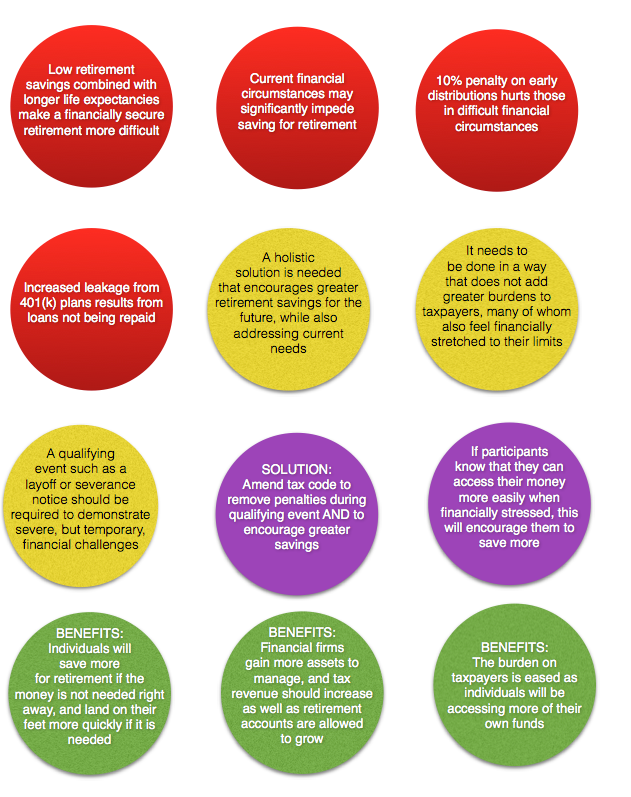|
The headlines:
The 10% early withdrawal penalty was designed to discourage access to retirement funds before what one usually thinks are the retirement years. If it were too easy, then retirement savings would not be there during those retirement years. For many of those who are accessing retirement funds, however, it is more a matter of necessity than of choice. The attached visual piece is an attempt to outline the problem and suggest a solution. It is meant as a starting point, open to fine tuning along the way. If we think of retirement as part of the overall financial picture, and not simply an isolated moment, then I think we can finally generate a more realistic solution. Telling people they need a million dollars for a secure retirement is counterproductive. Helping people solve their own financial riddles will produce positive results.
0 Comments
The Employee Benefit Research Institute (EBRI) has released its annual Retirement Confidence Survey (RCS). While there has been somewhat of an uptick over recent results, the overriding message is that most Americans are either not confident or are uncertain about having enough savings for a secure retirement. The 18% who are very confident about having a secure retirement is an improvement over last year's 13% figure. Another 24% indicated that they were not at all confident. Clearly, there is a lot of uncertainty out there. Other key points from the RCS:
How do we solve the confidence problem? While the RCS points out that there are some signs of improvement, I think that the bigger picture is that there is still a very long way to go for people to feel generally more optimistic. Debt and everyday expenses are on the minds of many. How can we talk to people about saving for the future when the present is its own challenge? Telling people that they need to save more for retirement is all well and good, but it doesn't get at more immediate needs. Creative ideas that will resolve both current and future challenges is what is needed. Ameriprise Financial has released a report that quantifies what this blog suggested in our initial post - there is a disconnect between the desire to save more for retirement and the reality of doing so. Simply put, most people do have the desire to save for the long-term, but meeting short-term needs tends to take priority. The Ameriprise study focused on three demographic groups - Baby Boomers, Gen X, and Millenials. Here are some of the more interesting findings:
While the study's conclusion that today's trade-offs will boost future financial goals is true enough, I think the one additional focus that is needed is helping people better navigate the current challenges, especially when they do get in the way. Once upon a time, defined benefit plans were the retirement plan of choice for most employers. The defined contribution plan, primarily in the form of the 401(k) plan, resulted in a major shift toward participants taking more responsibility for their own retirement savings. Unfortunately, many individuals are not skilled investors, resulting in a widespread savings shortfall. Add other financial challenges to the mix and the challenge is even greater. With DB plans declining and DC plans producing inadequate savings, many have turned to Social Security as their primary, if not sole, source of income in retirement. AARP highlights some key Social Security data:
Social Security remains an important piece of the retirement puzzle. Ensuring its availability for future retirees should be top of mind for the foreseeable future. |
Blog Author - Ken FelsherWith over 25 years of writing, editing, and research experience. I enjoy sharing with my readers my love of working with content on a variety of subjects. CategoriesAll 401(k) 402(g) Boomers Catch-up DB Dc Deferral Limit Defined Benefit Defined Contribution ERISA Healthcare Participation Pension Professionally Managed RCS Retirement Retirement Confidence Tax Code Vanguard Women Working Archives
March 2015
|

